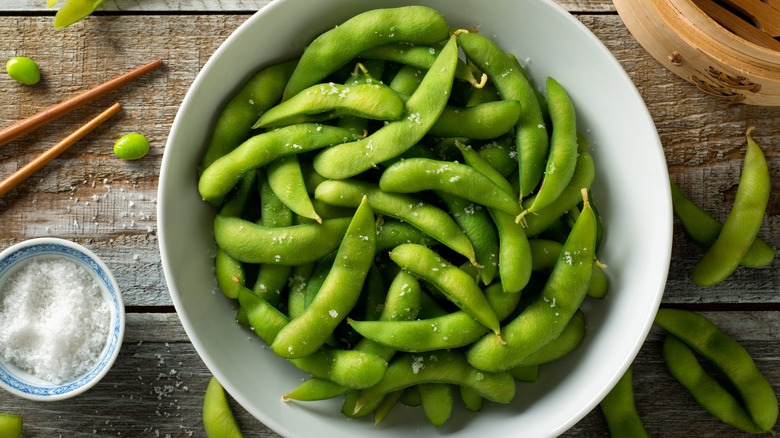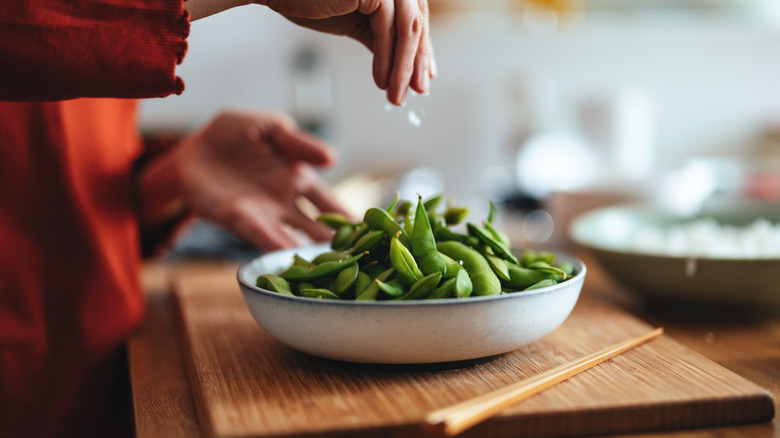No, Edamame Isn't Made With Lima Beans – Here's The Legume It Uses Instead
Those who've dined at Japanese restaurants or who appreciate the island nation's unique food culture have likely run across edamame. This fresh, hearty bean dish offers a perfect complement to umami flavors and doesn't overpower light sushi-style dishes. While edamame may share a similar appearance with lima beans, those with bad memories of the latter from childhood meals can rest easy. Edamame comes from a different legume entirely.
Edamame is a dish consisting of green soybeans, a protein-and-fiber-rich bean that's been part of diets in East Asia (including Japan) for thousands of years. What distinguishes edamame from other uses of soybeans is that the soybeans are harvested while still immature. Edamame is most easily distinguishable when the young soybeans are served steamed or boiled in their pods. This pod is discarded, and diners eat the small beans inside.
The interior part of this legume is where the confusion with lima beans may come in for some. While both are relatively firm and greenish, edamame beans are easy to recognize because of their smaller size, oval shape, and vibrant green color. Lima beans (also called butter beans) are paler, flatter, and often have a milder taste than the nuttier edamame.
Different beans, different uses
The way these two are used can also differ in significant ways. Lima beans are known for their versatility, working well in soups, stews, casseroles, salads, and many other recipes, in part thanks to their light, adaptable flavor. On the other hand, edamame (in the pod) is most often served with just a sprinkling of salt or heavily seasoned with bold flavors — such as with our spicy garlic edamame recipe. However, shelled edamame can also be integrated into other dishes, ranging from salads to stir-fries.
Legume lovers can also see the differences between lima beans and edamame when considering commonly suggested substitutions for each. Edamame can be replaced by similarly textured and flavored options like sugar snap peas, green peas, or fresh fava beans. Meanwhile, lima beans can be swapped out with similarly creamy beans like the gigante or corona varieties.
Even with this confusion cleared up, cooks shouldn't limit themselves to just lima beans or soybeans. There's a whole world of different types of beans waiting to enhance your meals — but only if you can properly tell them apart.

